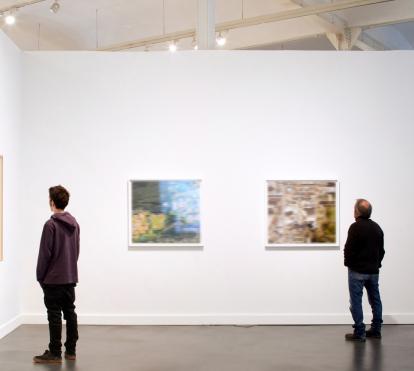
Delacroix (1798-1863). CaixaForum Madrid
18.10.11
2 minutes read"When I paint a picture, I am not writing a thought". Eugène Delacroix questioned the need for a theme in painting. According to the great French artist, what created emotion on a canvas were its artistic values ? material, light, colour ? rather than the scenes depicted in it. Precisely one of the objectives of the exhibition Delacroix (1798-1863) is to explore this new image of this French Romantic painter, distancing ourselves from his association with great compositions on historic themes to focus on him as a revolutionary pitted against the rigid conventions of neoclassical art.
The exhibition, jointly organised by ”la Caixa” Welfare Projects and the Louvre Museum, is the most complete on the trajectory of the French artist ever presented in Spain. Delacroix (1798-1863) features more than 130 works from public and private collections in Europe and America that reconstruct the painter's development, from his origins, when he took inspiration from artworks and literary texts, to his final years, marked by a synthesis of all that had gone before. One of the greatest attractions of Delacroix (1798-1863) is the opportunity it gives audiences of seeing at first-hand many works that have become references in our visual culture. These include Greece Dying on the Ruins of Missolonghi, as well as a Sketch for The Death of Sardanapalus and Women of Algiers in their Apartment (exceptionally loaned by the Louvre Museum), which Delacroix painted as a result of his journey around North Africa in 1832, and which also took him to several Spanish cities. This journey had a profound effect on him, and the exhibition also focuses on Delacroix's links with Spain. The large oil paintings featured here are accompanied by sketches, drawings, watercolours and etchings that illustrate the artist's inner life and show his affinities with more contemporary sensibilities.
The exhibition, curated by Sébastien Allard, head curator at the Painting Department of the Louvre Museum, will be open to the public at CaixaForum Madrid (Paseo del Prado, 36) from 19 October 2011 to 15 January 2012. More information in the PDF press release